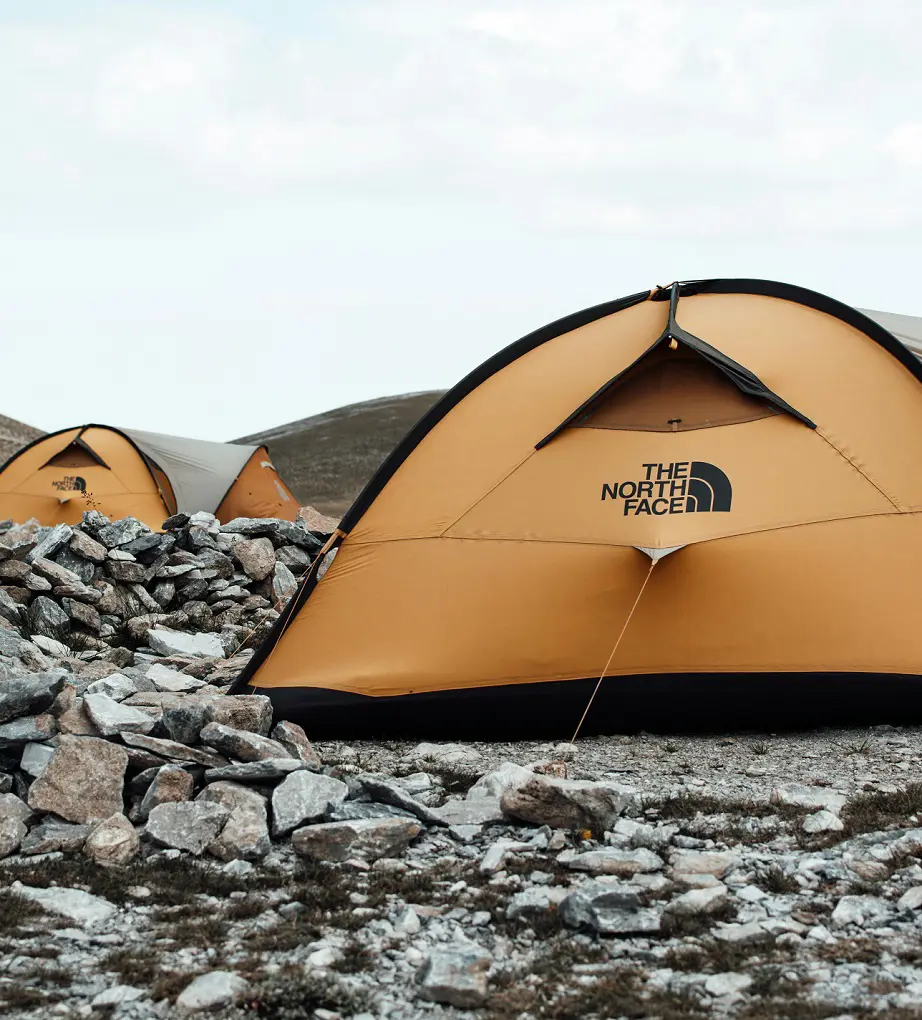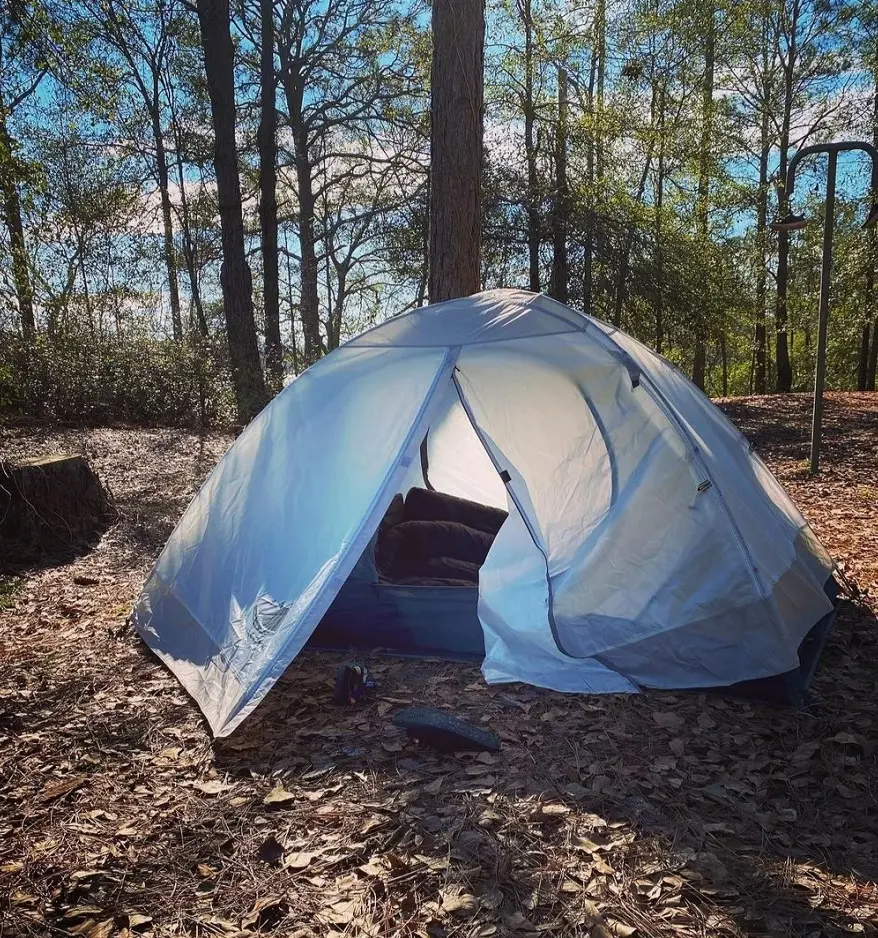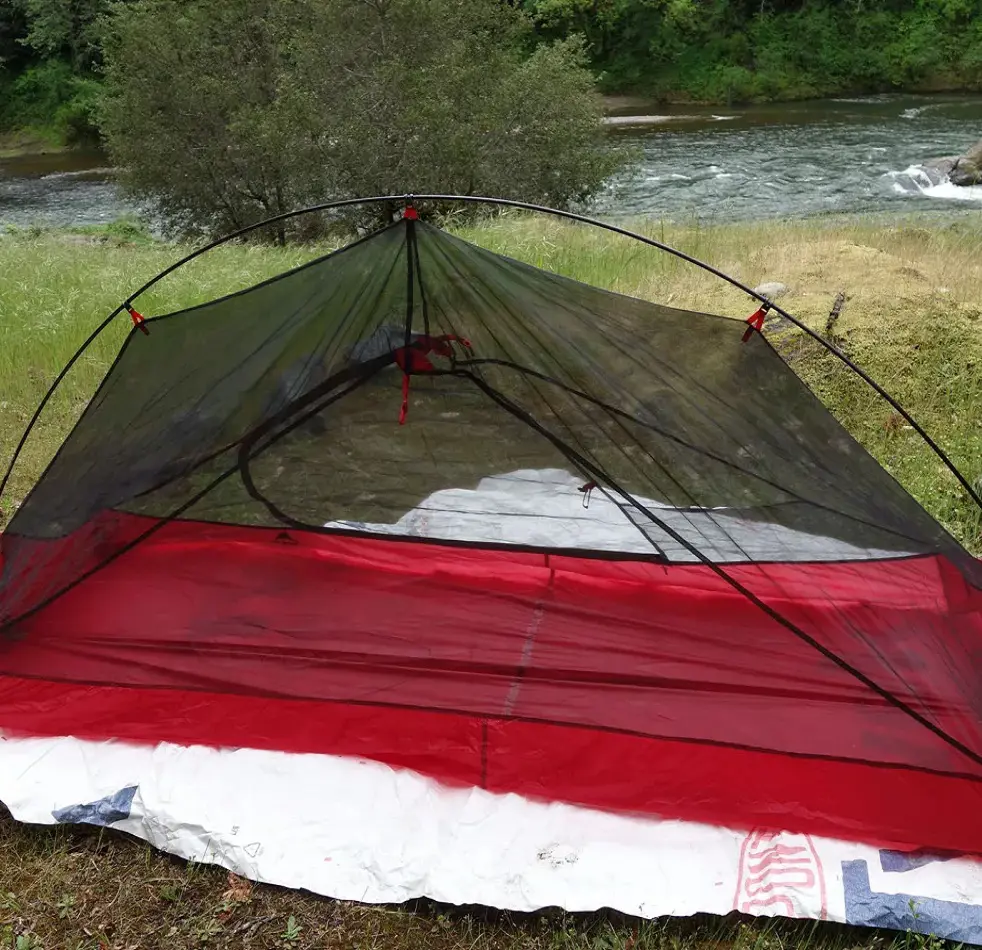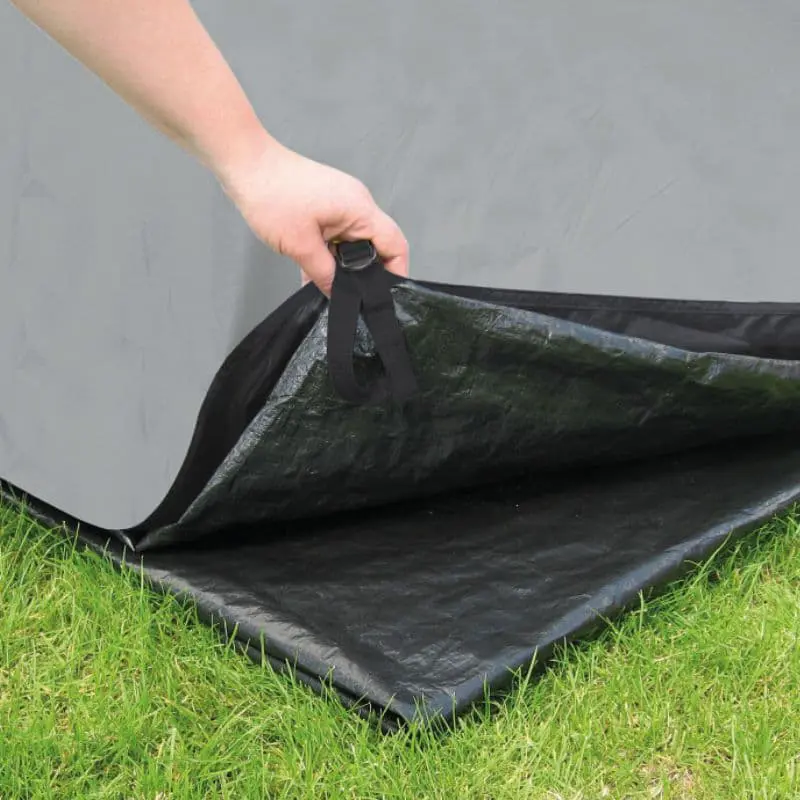A tent footprint is basically a fabric sheet, often made of polyester, nylon, and polyurethane. It is similar to that of a shoe sole which protects us from objects on the ground, provides stability, and prevents us from slipping on uneven and slippery surfaces.
Hence, it's a ground cloth that is placed between the bottom of your tent and the ground and is composed of waterproof material. They come in different sizes and forms, so you may find the ideal match for your tent. Ground sheets are optional pieces of kit because the majority of tents do not have tent footprints.
The reasons why you need a tent footprint are:
1. To Protect Tent's Floor
A footprint serves as your tent's first line of defense against tiny pebbles and twigs that may puncture its bottom. Using footprints will extend the lifespan of your tent. Tent footprints, which add only a little more weight, substantially double your protection from sharp items. They are constructed of materials identical to the tent floor.
Professional campers are aware that after spending hours cleaning away the perfect tent spot, you may still find other items underneath once your tent is put up.
Therefore, footprints serve as an additional layer of protection between your tent's floor and the ground, preventing damage to your tent. Also, replacing or repairing your footprint is far less expensive than tent repair if it is ripped or punctured.
2. More Waterproofing

Comfort and safety on the trail come first when it comes to staying dry. Your tent's fly performs an excellent job of keeping the rain out initially, but you'll want to take into consideration a few other aspects as well since site selection is crucial to keeping your tent dry on particularly wet nights.
Make sure the location of your tent is nice and level and on somewhat high ground to prevent water from collecting underneath it. The perfect location will be mostly clear of trash and offer enough space for you to set up your tent.
Even the highest ground will eventually become saturated from persistent rain, resulting in the formation of puddles. This is when the importance of tent footprint becomes visible once more. Even in the most obstinate downpours, a well-fitted footprint will provide an additional layer of waterproofing to keep your back dry.
3. It Keeps the Tent Clean
It's a great idea to place another piece of material between you and the bottom of your tent to keep it cleaner. Packing your tent also means packing your inner tent with the flysheet, which may get problematic if the site is muddy. The waterproof stuff sack that comes with your tent will usually be included; this keeps any dirt out of your pack.
Additionally, cleaning it is quite simple. All you need to do is use a towel and water to remove any dirt. Using a scourer would be the best option for any significant muck that is stuck to the footprint; just be cautious not to be too harsh.
Thus, cleaning the footprint as opposed to the entire tent is a lot simpler as it serves as the "first line of defense" as mentioned above, keeping the remainder of your tent tidy. Usually, footprints come with a sack so you may keep a dirty one apart from your other equipment.
4. It Adds Extra Warmth

To limit the amount of heat lost to the ground, add a footprint to the underside of your tent to create an additional layer that raises you somewhat off the ground. When camping, people tend to underestimate the amount of body heat that can be lost in this way.
This will make a wonderful foundation for a cozy night's sleep, especially when paired with an air bed or quality sleeping mat. When camping, the majority of heat is lost through the ground, therefore leaving a footprint will help you stay warm.
Consequently, the footprint serves as a division between the floor of your tent and the chilly ground. This keeps heat from escaping and keeps the interior of your tent warmer.
5. Easier Setup and Less Hassle
When it comes to easy setup and less effort during camping vacations, a tent footprint is a big plus. A footprint removes the need for extreme site preparation, including moving jagged rocks or uneven ground, by offering a safe covering underneath the tent.
By streamlining the procedure, campers can concentrate on having fun in the great outdoors while saving time and effort. Additionally, a footprint greatly reduces the possibility of rips or punctures on the tent's floor, which may be annoying and expensive to fix.
A footprint guarantees a more dependable and long-lasting camping setup by protecting the most susceptible part of the tent. This additional protection results in greater overall enjoyment and peace of mind.
6. Moisture Prevention

By adding a layer of protection between you and the ground, a tent footprint helps keep moisture out and prevents mold growth inside your tent from condensation buildup on chilly nights. As a result, a tent footprint is essential for keeping moisture out of the tent and improving comfort and longevity.
A footprint efficiently prevents moisture from leaking through by forming a barrier between the tent and the ground, lowering the possibility of condensation and dampness within the tent.
A frequent occurrence in tents, condensation can cause discomfort, encourage the growth of mildew, or even harm the material of the tent. By keeping moisture from rising from the ground and condensing on the inside walls of the tent, a footprint helps to reduce this problem. This makes for a dryer and more enjoyable camping experience, especially during humid or wet weather.
7. Hygiene
A tent footprint helps you keep your camping area hygienic and clean by preventing dirt, trash, and other pollutants from building up, by acting as a barrier between the floor of your tent and the ground, in addition to making the interior of the tent cleaner overall, this also makes camping more comfortable and pleasurable.
A tent footprint also lessens the chance of bringing in undesired materials that might cause discomfort or even health problems by minimizing the amount of dirt and debris that enters the tent.
Camping or outdoor enthusiasts may sleep in a more comfortable and tranquil manner by keeping their tents clean and hygienic, knowing that they are shielded from any pollutants.
8. Durability

This durability is further increased with a tent footprint, which shields the tent floor from harm from sharp things like pebbles, twigs, and uneven ground as explained above. The floor of the tent is frequently the most exposed area since it is always in touch with the ground, causing pressure and friction that over time can cause rips, tears, or abrasions.
Your tent will last longer if you add a footprint since you're effectively constructing a buffer that absorbs wear and tear. It serves as a protective layer that absorbs impact while maintaining the structural integrity of your tent floor. This is particularly crucial for lightweight tents, which may be more prone to damage due to their thinner construction.
A tent footprint is a necessary component for preserving your tent's long-term durability and making sure it performs properly after several camping excursions. Replacing a tent footprint is far less expensive and simpler than repairing or replacing a tent.
9. Custom Fit
To guarantee that they offer the appropriate level of coverage without going over the tent walls, many tent footprints are made to match certain tent types. This keeps water from building up below your tent and guarantees appropriate drainage.
This is crucial because, should the footprint go past the tent, rainwater may gather on the exposed edges and collect beneath the structure, perhaps leading to seepage of water. Water cannot build up inside the tent because of a specific fit that makes sure the footprint stops just inside the outside corners.
To avoid any water buildup between the stitched-in groundsheet and the footprint, you'll find that most footprints are designed to match a certain tent type (or occasionally more than one model). They will also typically be marginally smaller than the floor plan. This 'made-to-measure' method simplifies the process of determining the appropriate footprint for your tent.
10. Lightweight and Easy to Carry

For campers who value portability, a tent footprint is a great addition to their gear or equipment because it is lightweight and very portable. Tent footprints, in contrast to ordinary tarps, are usually composed of lightweight, sturdy fabrics like nylon or polyester. These materials offer protection without significantly increasing your pack's weight.
The majority of footprints are made to fold or roll up a little, taking up the least amount of room in your backpack. Backpackers, hikers, and anybody else who wants to travel light but still make sure their tent is well-protected would especially benefit from this.
A tent footprint is a great way for campers to cut down on carrying weight without compromising utility. No matter, if you are heading out on a weekend camping trip or a long-distance walk, packing a footprint, can protect your tent without adding extra weight to your pack.
Do You Really Need a Footprint?
If you want to prolong the life of your tent, you must have a tent footprint first and foremost. Because they are often inexpensive, footprints are simple to replace when they become worn out. While many tents don't need footprints, bear in mind that since backpacking tents are made of thinner fabrics and are more likely to be damaged, they must be used.
If you're an experienced camper and go outdoors frequently but have never used one, you might not understand the need for one, but if you've ever had a tent leak, dread packing up a muddy tent, or had a tear in the bottom of your tent, a footprint can be quite helpful.
Whatever you prefer, you must think and consider the activity, the environment, and the number of users. The correct tent footprint will let you continue to enjoy your favorite outdoor activity for many years to come, it does not matter if you are camping in the backcountry or watching a movie at the park.
How to Choose a Tent Footprint

To select a tent footprint there are a few features to look upon like:
Durability
When selecting a tent footprint, consider how well it will hold up under use. The denier of a tent's footprint is the most reliable indicator of its toughness. Denier is basically a unit of measurement that represents the weight and thickness of threads that are used in a fabric. The greater the denier, the thicker and more durable the tent footprint.
A tent footprint's denier rating can range from 60 to 300 deniers; for durability, choose 250 deniers or more if possible. Higher denier fabrics are also heavier, whereas lower denier values indicate lighter, less durable materials.
Material
Footprints from tents are made of various materials. Seek footprints composed of durable, water-resistant materials such as polyester, nylon, or polyurethane. These components act as a barrier against abrasive surfaces, wetness, and sharp items, extending the life of your tent.
Size
To avoid water collecting between the tent and the footprint, the footprint has to be relatively smaller than the tent. A properly fitting footprint can guarantee a more comfortable camping experience by keeping the base of your tent dry and tidy.
To guarantee a good fit, some tents have a footprint made specifically for that model. In other cases, a matching footprint for a tent can be bought separately. If a footprint isn't made specifically for your shelter, you can obtain universal footprints that can be folded or cut to the size of your tent.
How Big Should a Tent Footprint Be?
It is recommended that you pick a tent footprint that is up to two inches smaller than the outline of your tent. This counter-intuitive method is essential for stopping any leaks and water buildup. Rainwater may collect between the footprint and the tent floor if it is larger than the tent's perimeter or if it is the same size.
This condensation may cause moisture to leak inside the tent, which might be uncomfortable and perhaps harmful to the interior of the tent. As a result, choosing a slightly smaller footprint guarantees that rain is efficiently diverted away from the tent, preserving a dry and cozy camping space.
Is It Possible To Make Your Own Tent Footprint?
Making a tent footprint on your own is a good substitute for buying one. Even if it takes some effort, the cost is always reduced. Selecting the material is the most crucial part; though, it can be found at any hardware shop. The most common materials consist of:
- Tarp
- Polycro
- Tyvek home wrap









